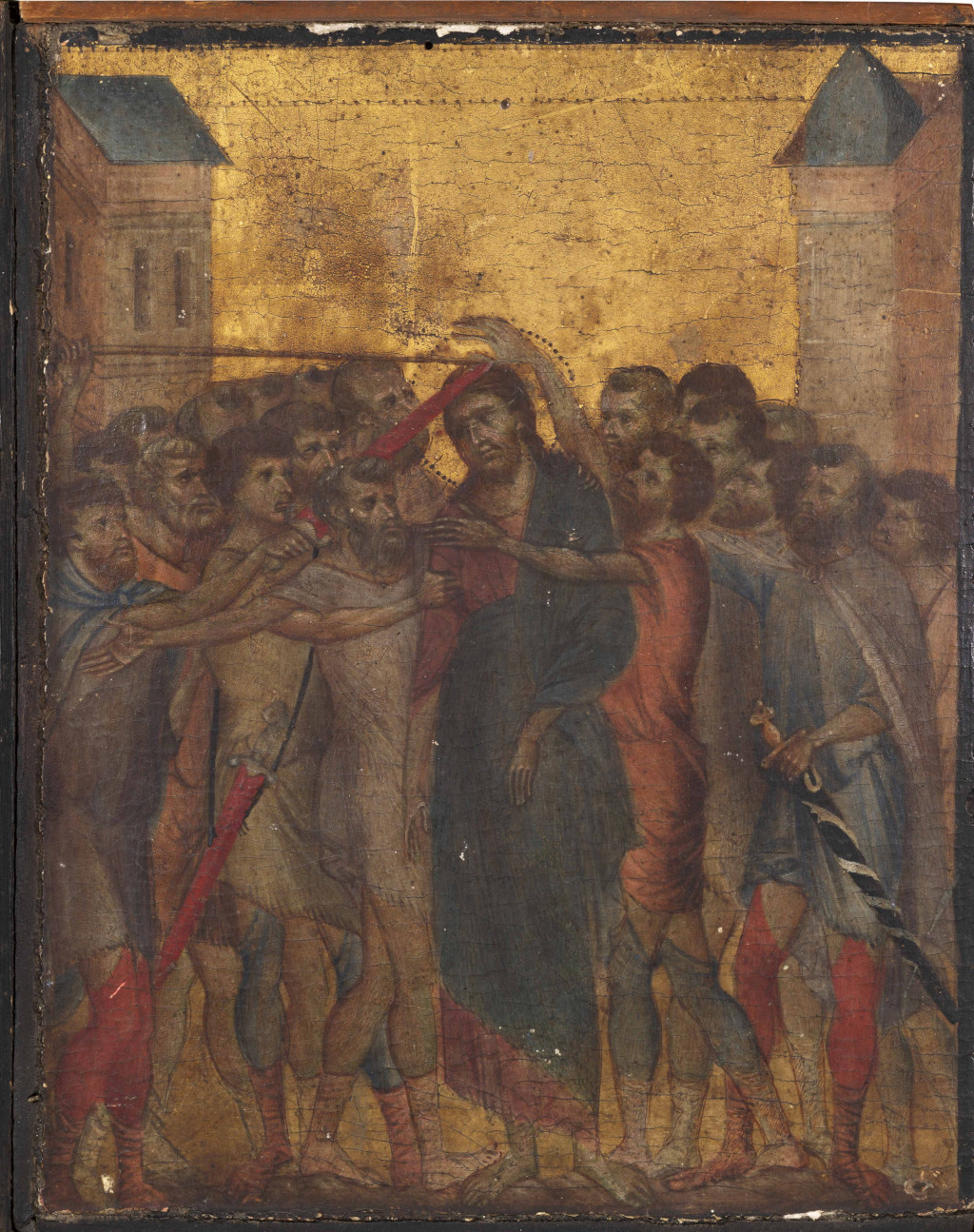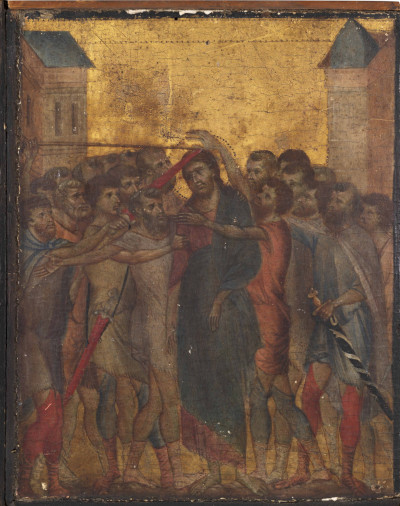The Mocking of Christ rose to fame just a few years ago, after being discovered in northern France and attributed to Cimabue.
This piece has since been connected to the Diptych of Devotion, and would have been one of the original panels (as well as the Flagellation of Christ). This allows us to confidently place the work in around 1280, and its size matches up with this claim - it is 25 cm by 20 cm approximately.
Description
The Mocking and Flagellation of Christ, two scenes from one wing of the original diptych, feature very similar compositions. We have two architectural touches providing vertical balance on both sides of the work, a clear sky depicted in gold leaf paint, with figures in the foreground.
In this example, however, many more figures are featured. There are close to twenty men trying to grab and annoy Christ, with their hands outstretched in his direction. He wears a modest robe and sandles, and looks unhappy as events unfold.
Cimabue depicts the other men as a mixture of ages, some with bushy beards, and others seemingly unshaven. Some are just represented as heads in the background of this tightly-knit group. There are an equal number on each side of Christ, bringing balance to the work, and the angle of their heads is also carefully lifted diagonally towards the center.
In order to ensure some aesthetic interest, Cimabue varies the clothing colors across the figures, which also helps them to stand out individually. Much of the original detail has been lost, however, due to the amount of time that has passed since Cimabue's original work back in the late 13th century.
A small dotted outline remains around Christ's head where the artist had originally left a halo, just as with many of his paintings of Christ. This has faded over time, with just some small dots of dark paint remaining in this circular shape.
Style
Cimabue was still very much attached to the flattened perspective of traditional art when working on this piece. There is nothing to differentiate foreground from background, other than what our brains can intuitively translate. Facial expressions were still very serious at this point, but a more humanistic look was starting to emerge.
The date of this artwork must be remembered when we start to place Cimabue within the transition towards the Renaissance. He would make some innovations himself, but also encourage younger artists to do the same, and the two together would help push things forwards.
Conclusion
This piece may not be in ideal condition, but its sudden re-appearance in recent years has brought Cimabue's name back into the mainstream. Its price realised at sale was record breaking for a painting of that period, and it underlines the confidence with which the attribution has been met, as well as the value that still persists amongst the earliest of Renaissance artists.
The Mocking of Christ remains in the permanent collection of the Louvre, one of the most visited art galleries in the world, and this also helps to keep Cimabue's legacy very much in our memories, even though this artwork itself has lost some of its original qualities over the centuries.
Large Image
 Christ Mocked (Detail) by Cimabue
Christ Mocked (Detail) by Cimabue




